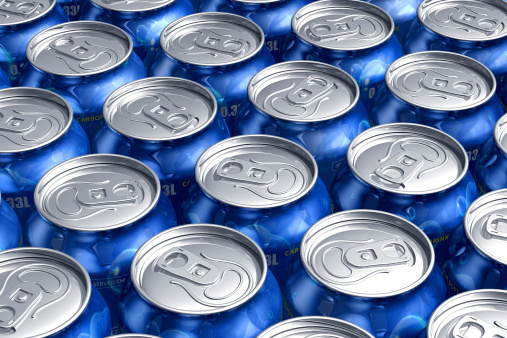Commodities & Metals
Rusal Exec: World Aluminum Supply Needs 40% Cut
Published:
Last Updated:

A senior executive of the world’s largest aluminum producer, Russia’s Rusal, has said that 40% of global aluminum production is unsustainable at current prices. From around $1,900 per metric ton (tonne) a year ago, the price today is about $1,830. Global supply exceeded demand in the first seven months of this year by 773,000 tonnes; the surplus in all of 2012 was 506,000 tonnes.
BHP Billiton PLC (NYSE: BHP) produced 1.18 million tonnes of aluminum in its fiscal year ended in June 2013, compared with 1.15 million tonnes in fiscal 2012.
Rio Tinto PLC (NYSE: RIO), which paid $38 billion in 2007 to acquire Canadian producer Alcan, increased production by 14% in the first half of 2013, compared with the same period in 2012. Rio Tinto also gave up trying to sell its Pacific Aluminum division because no buyer could be found.
Century Aluminum Co. (NASDAQ: CENX) has shipped 4.4% more aluminum in the first half of this year.
Alcoa has been closing smelters and restructuring. In the first half of this year, the company has taken $251 million in restructuring charges and closed smelting operations in Canada and Italy. The company’s base capacity is about 4.2 million metric tonnes, of which some 523,000 tonnes is currently idle. That is about 12.5% of capacity. The company said in May it is considering idling another 460,000 tonnes of smelting capacity over the next 15 months, an additional 11%.
Now Alcoa may be in better shape than Rusal. Its average realized price per tonne in the second quarter was $2,237. Costs of production totaled $2,230. That is a gross profit of just $7 a tonne, far below the gross profit in the second quarter of 2012 of $35 a tonne.
Alcoa managed to lower its costs by $64 a tonne in the second quarter, but the company’s realized price fell by $92 a tonne. And there is no reason to believe that prices have gone anywhere but down in the third quarter.
As with so many commodity metals, what China does will heavily influence the aluminum market. New smelters are being built in the country that can be profitable with prices as low as $1,500 a tonne, according to a report in The Wall Street Journal. Alcoa, Rio Tinto, BHP and Rusal cannot compete with that.
Shares of Alcoa closed at $8.44 on Thursday in a 52-week range of $7.63 to $9.37. Shares are inactive in premarket trading Friday morning.
Retirement can be daunting, but it doesn’t need to be.
Imagine having an expert in your corner to help you with your financial goals. Someone to help you determine if you’re ahead, behind, or right on track. With SmartAsset, that’s not just a dream—it’s reality. This free tool connects you with pre-screened financial advisors who work in your best interests. It’s quick, it’s easy, so take the leap today and start planning smarter!
Don’t waste another minute; get started right here and help your retirement dreams become a retirement reality.
Thank you for reading! Have some feedback for us?
Contact the 24/7 Wall St. editorial team.